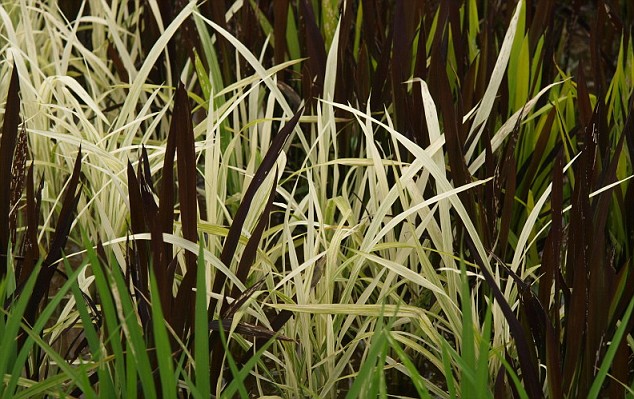The article below has been going around the internet and is being posted so that TheGardenLady readers can see what creative gardeners can accomplish. To see more of the art check out this site or this site.
Stunning crop art has sprung up across rice fields in Japan. But this is no alien creation – the designs have been cleverly planted.
Farmers creating the huge displays use no ink or dye. Instead, different colours of rice plants have been precisely and strategically arranged and grown in the paddy fields.
As summer progresses and the plants shoot up, the detailed artwork begins to emerge.

The village has now earned a reputation for its agricultural artistry and this year the enormous pictures of Napoleon and a Sengoku-period warrior, both on horseback, are visible in a pair of fields adjacent to the town hall.
More than 150,000 vistors come to Inakadate, where just 8,700 people live, every summer to see the extraordinary murals.
Each year hundreds of volunteers and villagers plant four different varieties of rice in late May across huge swathes of paddy fields.And over the past few years, other villages have joined in with the plant designs.


The largest and finest work is grown in the Aomori village of Inakadate, 600 miles north of Toyko, where the tradition began in 1993.
Another famous rice paddy art venue is in the town of Yonezawa in the Yamagata prefecture.
This year’s design shows the fictional 16th-century samurai warrior Naoe Kanetsugu and his wife, Osen, whose lives feature in television series Tenchijin.
Various artwork has popped up in other rice-farming areas of Japan this year, including designs of deer dancers.

The farmers create the murals by planting little purple and yellow-leafed kodaimai rice along with their local green-leafed tsugaru roman variety to create the coloured patterns between planting and harvesting in September.
The murals in Inakadate cover 15,000 square metres of paddy fields. From ground level, the designs are invisible, and viewers have to climb the mock castle tower of the village office to get a glimpse of the work.
Rice-paddy art was started there in 1993 as a local revitalization project, an idea that grew out of meetings of the village committee.


In the first nine years, the village office workers and local farmers grew a simple design of Mount Iwaki every year.
But their ideas grew more complicated and attracted more attention. In 2005 agreements between landowners allowed the creation of enormous rice paddy art.
A year later, organisers used computers to precisely plot planting of the four differently colored rice varieties that bring the images to life.

Indeed, rice field arts are so amazing. I just wonder how they do it. I actually posted a blog related to rice field art.
This is a very beautiful type of Rice Art. There is also another type where you write name on rice. this is believed to bring good luck to all those who wear these good luck pendant, good luck necklace, etc. Rice art
There are posts and other info all over the web suggesting these are hoax pictures… I can’t seem to confirm… Internet doctored photo hoaxes are very common… Would like to know for sure…
Wow these designs are ace! I stumbled across your site from Googling “gardening blogs” and the rice art is amazing!
If you’ve got any newer designs or insane gardening images please post them! You’ve got a new loyal reader!
I admire those who can play with photoshop and other photography softwares.
I tend not to believe in “incredible” things.
When I observed the Samurai’s hand holding the sword, hand and sword describe a 90 degree angle.
In the picture detailing closer to the ground, the sword and hand describe a diagonal intersection, maybe 30 degrees. Go figure!
Amazing crop art, beautiful colours, must be very time consuming and intricate.